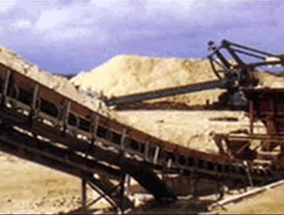Understanding Rubber Conveyor Belts: Key Insights for Industrial Applications
Published:
May 09,2025
Classification:
This article delves into the essential characteristics and applications of rubber conveyor belts within the industrial equipment sector. Ideal for professionals seeking to enhance their knowledge on t

Rubber conveyor belts are critical components widely used in various industrial applications, providing a reliable means for transporting materials efficiently. These belts are primarily composed of rubber, which offers excellent durability and flexibility, making them suitable for handling a diverse range of products, from bulk materials to packaged goods.
One of the significant advantages of rubber conveyor belts is their ability to withstand harsh environmental conditions. They are designed to endure exposure to chemicals, abrasion, and extreme temperatures, which is essential in industries such as mining, agriculture, and manufacturing. The rubber material provides a strong grip on transported items, reducing the chances of slipping and ensuring a smooth operation.
In terms of design, rubber conveyor belts can be customized to meet specific application requirements. This includes variations in thickness, width, and surface texture, allowing for optimized performance based on the materials being transported. For instance, belts with a textured surface can enhance traction for loose or granulated substances, while flat belts are ideal for moving packaged products.
Maintenance plays a crucial role in the longevity and efficiency of rubber conveyor belts. Regular inspections are recommended to check for signs of wear, such as cracks or fraying, which can compromise the belt's integrity. Additionally, ensuring proper tension and alignment can reduce unnecessary strain on the belt, extending its operational life. It's also beneficial to clean the belt regularly to prevent the buildup of debris, which can lead to mechanical failures.
When considering the installation of rubber conveyor belts, it's essential to account for the specific needs of your operation. Factors such as load capacity, speed, and environmental conditions should inform your selection process. Consulting with experts in industrial belt systems can provide valuable insights into the most suitable types for your application, ensuring optimal performance and reliability.
In conclusion, rubber conveyor belts are integral to the efficient functioning of industrial operations. Their robust characteristics and adaptability make them an excellent choice for various applications. By understanding their properties and implementing proper maintenance routines, businesses can maximize the efficiency and lifespan of their conveyor systems, leading to improved productivity and reduced operational costs. Whether you are in manufacturing, logistics, or any other sector requiring material transport, rubber conveyor belts remain a dependable solution for your industrial needs.
One of the significant advantages of rubber conveyor belts is their ability to withstand harsh environmental conditions. They are designed to endure exposure to chemicals, abrasion, and extreme temperatures, which is essential in industries such as mining, agriculture, and manufacturing. The rubber material provides a strong grip on transported items, reducing the chances of slipping and ensuring a smooth operation.
In terms of design, rubber conveyor belts can be customized to meet specific application requirements. This includes variations in thickness, width, and surface texture, allowing for optimized performance based on the materials being transported. For instance, belts with a textured surface can enhance traction for loose or granulated substances, while flat belts are ideal for moving packaged products.
Maintenance plays a crucial role in the longevity and efficiency of rubber conveyor belts. Regular inspections are recommended to check for signs of wear, such as cracks or fraying, which can compromise the belt's integrity. Additionally, ensuring proper tension and alignment can reduce unnecessary strain on the belt, extending its operational life. It's also beneficial to clean the belt regularly to prevent the buildup of debris, which can lead to mechanical failures.
When considering the installation of rubber conveyor belts, it's essential to account for the specific needs of your operation. Factors such as load capacity, speed, and environmental conditions should inform your selection process. Consulting with experts in industrial belt systems can provide valuable insights into the most suitable types for your application, ensuring optimal performance and reliability.
In conclusion, rubber conveyor belts are integral to the efficient functioning of industrial operations. Their robust characteristics and adaptability make them an excellent choice for various applications. By understanding their properties and implementing proper maintenance routines, businesses can maximize the efficiency and lifespan of their conveyor systems, leading to improved productivity and reduced operational costs. Whether you are in manufacturing, logistics, or any other sector requiring material transport, rubber conveyor belts remain a dependable solution for your industrial needs.





